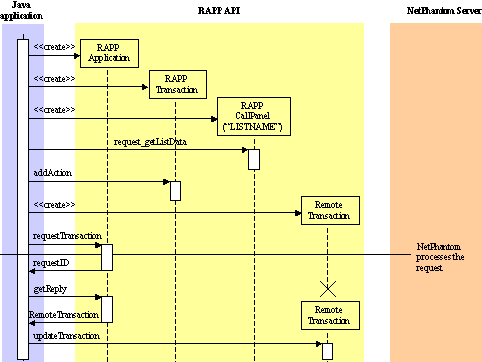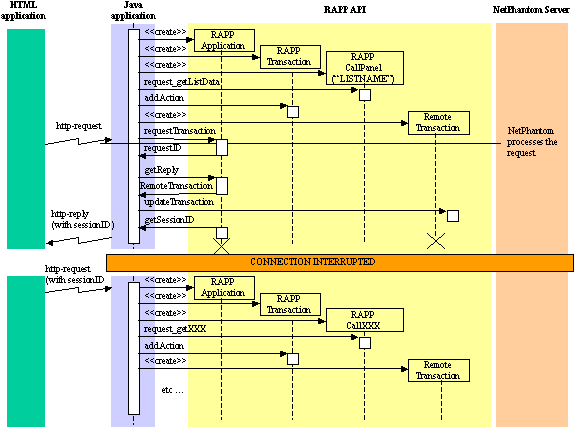The RAPP API (Remote Application Protocol Application Programming Interface) is an API that can be used by other applications to interact with NetPhantom applications running on a NetPhantom Server.
Before the introduction of the RAPP API in the NetPhantom Server, it was impossible for other applications to use the NetPhantom Server to access host-based systems. This meant that all applications had to have their own module for accessing the host, even if they wanted to access the same host application. To write modules for host access was often a complicated and time-consuming process.
With the introduction of the NetPhantom RAPP API, it is now possible to use the NetPhantom Server as an integration hub. All the other server-side applications that want to access the host-based systems can now talk to the NetPhantom Sever and use the NetPhantom Server for host access. This also means that when you add RAPP support to an application, you automatically get access to host systems on both AS/400 and Mainframe computers. Writing a module that can use RAPP is also a much easier, hence cheaper, process than writing a module that directly accesses the host.
Host access applications running on the NetPhantom Server can be developed and tested using the NetPhantom Java Client without implicating the Client Applications. The process is visual, allowing the developer(s) and tester(s) to check host data in the NetPhantom graphical panels.
This work method results in robust and well-tested host access applications
running under the NetPhantom Server, that are ready to be integrated with other
requesting applications. Construction and testing of complex, multi-tier
applications is greatly simplified.
How to Use RAPP Explaining how to use RAPP is the purpose of this entire document and its
accompanying sample (SAMPLES_RAPPAPI). But in brief, you import a RAPP package
that includes classes with methods that are used to manipulate the NetPhantom
Application. This package, the RAPP API, makes it possible to navigate through
the NetPhantom Application, to get/set data in the NetPhantom Application, and
to directly access the host screens.
This means that the whole host application, and all its data, is available
to every application that interfaces with the RAPP API. We call the application
that uses the RAPP API to communicate with the NetPhantom Server a Client
Application, even though it might be a server to other clients. From NetPhantom's
point of view, it is a client.
Fig. 1 How RAPP fits in the overall picture.
RAPP - The API Before getting into the details of using RAPP, we must take a short look
at the workflow.
There are actually two different workflow cases. The first is when the Client
Application that invokes the RAPP session is able to maintain the connection
throughout the whole session. This can be called a Continuous RAPP Session.
The second is when the Client Application for some reason is unable to maintain
the connection. This can be called an Interrupted RAPP Session.
A Continuous RAPP Session The workflow for a Continuous RAPP Session consists of the following steps.
The steps are described from the point of view of the Client Application.
The figure below presents an example of the workflow as a sequence diagram.
In this example, the content of a listbox is requested. Steps 2, 3 and 13 are left
out of the diagram.
Fig. 2 A sequence diagram showing the workflow for a Client
Application running in Continuous mode, requesting data from a listbox in a
NetPhantom application.
An Interrupted RAPP Session The workflow for an Interrupted RAPP Session consists of the following steps.
The steps are described from the point of view of the Client Application. After
step 14 the connection to the NetPhantom Server has been terminated.
Fig. 3 A sequence diagram showing the workflow for
a Client Application running in Interrupted mode, requesting data from a
listbox in a NetPhantom application before disconnecting, and then
reconnecting for the next request.


